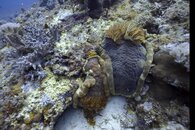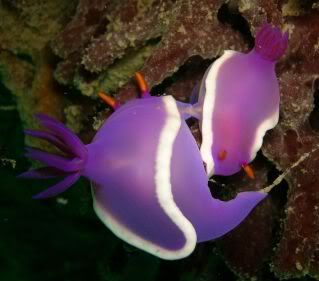World Wide Diver
Contributor
Attached is a photo of two spanish dancers in what we think is a mating position. The spanish dancers are in a fairly unusual colour phase - blue (we have seen red, yellow and orange).
Note that the spanish dancers were both releasing a mustard coloured cloud of liquid from the area of their gills (lungs) and were in a '69' position.
Described mating of spanish dancers does not specify what the liquid is. (sperm or something else?!)
Has anyone seen this before/can explain this behaviour?
Cheers.
Note that the spanish dancers were both releasing a mustard coloured cloud of liquid from the area of their gills (lungs) and were in a '69' position.
Described mating of spanish dancers does not specify what the liquid is. (sperm or something else?!)
Has anyone seen this before/can explain this behaviour?
Cheers.






